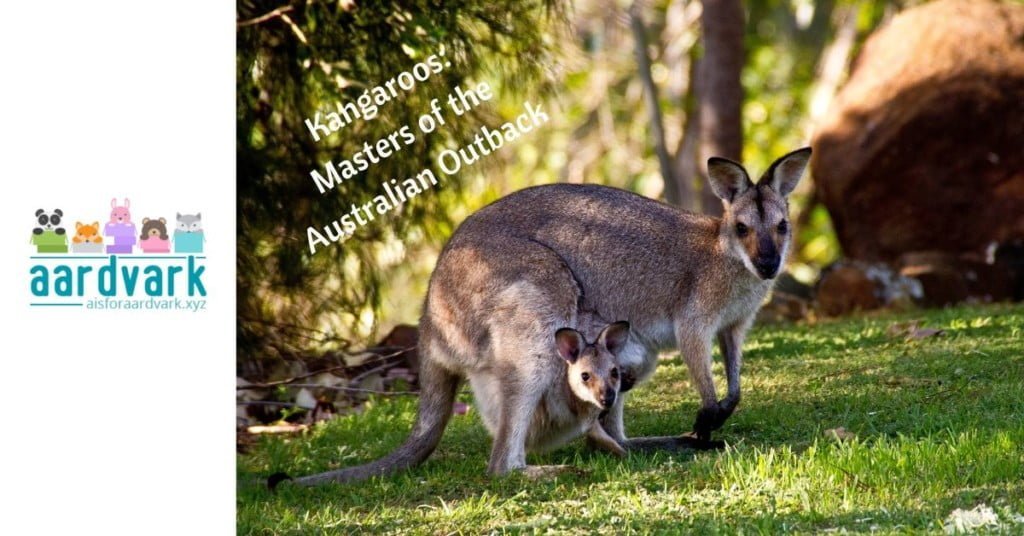In the expansive and rugged landscapes of Australia, kangaroos stand as iconic symbols of adaptability and resilience. From their unique physical attributes to intriguing behaviors, these marsupials captivate the imagination and play essential roles in the diverse ecosystems of the Australian Outback.
Physical Description
Kangaroos belong to the Macropodidae family, along with wallabies, quokkas, and several similar-looking creatures, They present a fascinating array of physical characteristics that contribute to their mastery of the Australian terrain.
Size and Variation
Various kangaroo species inhabit Australia. The red kangaroo claims the title of the largest marsupial, reaching heights exceeding six feet. Conversely, the agile wallaby showcases a more compact stature. This diversity in size enables kangaroos to live in an array of habitats, from expansive plains to dense woodlands.
Tails and Feet
A defining feature of kangaroos is their robust tails, crucial for maintaining balance during their distinctive hopping motion. It also provides support when they stand upright.
The hind feet, equipped with powerful muscles and elongated toes, facilitate the characteristic kangaroo hop, a remarkable mode of locomotion that allows for efficient movement.
Lifespan
In the wild, kangaroos typically enjoy a lifespan of six to eight years. Factors like predation and environmental conditions influence their longevity.
Adaptations for Survival
Kangaroos, as herbivorous marsupials, have evolved unique adaptations that contribute to their survival in the harsh Australian environment. These include their fur and their nighttime prowling.
Camouflage Fur
Kangaroo fur, varying in color and thickness, serves as effective camouflage in the local habitat, offering concealment from predators and aiding in their foraging endeavors.
Nocturnal Behavior
While some kangaroo species are diurnal, others are nocturnal, strategically emerging during the cooler nighttime hours to feed and conserve energy. This helps them avoid the scorching temperatures of the day.
Kangaroo Habitat: Where They Live and Shelter
Kangaroos are well-adapted to a variety of habitats across Australia, from arid deserts to grassy plains and dense forests. They seek shelter in the form of scrubby bushes, rocks, and the shade of trees during the heat of the day, minimizing exposure to the harsh sun.
Kangaroos also utilize natural features such as caves and rock formations for refuge. Their ability to thrive in diverse environments reflects their resilience and adaptability.
Kangaroo Diet: What Fuels Their Hopping Journeys
Kangaroos are primarily herbivores, with a diet consisting mainly of grasses and forbs (herb-like flowering plants). Their efficient digestive systems allow them to extract maximum nutrition from tough, fibrous plant material. With a preference for fresh green vegetation, kangaroos play a crucial role in shaping plant communities through their selective grazing.
Hopping Mastery
The kangaroo’s most distinctive trait is its unparalleled hopping ability, a specialized form of locomotion that involves powerful hind-limb propulsion. This energy-efficient motion enables kangaroos to cover vast distances quickly and efficiently, making them well-suited for the expansive Australian Outback.
An adult red kangaroo can jump up to 45 feet in a single leap! Compare that to the men’s world record, which is just over 29 feet.
Kangaroo Boxing
Male kangaroos engage in fascinating behaviors, including boxing matches. These displays of strength and agility occur primarily during mating seasons when dominant males, known as boomers, compete for the attention of estrous females. These “boxing” matches involve powerful kicks and tail swipes, showcasing the kangaroo’s physical prowess and determination.
Cultural Significance and Origins
Kangaroos have also woven themselves into the cultural fabric of Australia and beyond.
In Aboriginal Dreamtime stories, kangaroos often feature as ancestral beings with supernatural qualities. In modern Australia, kangaroos are national symbols, adorning the country’s coat of arms.
The term “kangaroo court,” often used to describe a mock or illegitimate legal proceeding, has an interesting origin. Some theories suggest it may have originated during the Australian Gold Rush era of the early 1850s. Some say it came from informal courts lacking proper legal procedures that were likened to the unpredictable and chaotic behavior of kangaroos. Others think the phrase referred to claim jumpers.
In literature and popular culture, kangaroos continue to be celebrated for their resilience, uniqueness, and dietary habits, further solidifying their place in the hearts and minds of Australians and wildlife enthusiasts worldwide.
The kangaroo’s physical prowess, distinctive hopping, boxing behavior, and dietary preferences collectively paint a portrait of a truly extraordinary species. As we delve into the captivating world of kangaroos, we discover not just a marsupial but a symbol of adaptability, strength, and the awe-inspiring beauty of the Australian wilderness.


